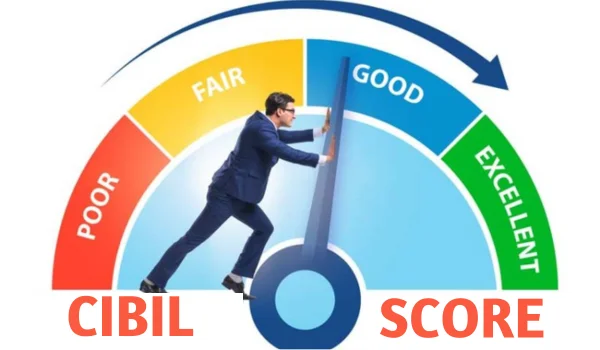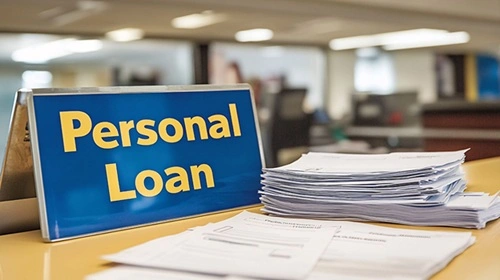In today’s credit-driven economy, your CIBIL score plays a crucial role in determining your financial health. Whether you’re applying for a personal loan, credit card, home loan, or car loan, your score can make or break the deal.
But what if your CIBIL score is low or average and you’re in urgent need of credit? The good news is — with disciplined steps, you can improve your CIBIL score in 30 days.
In this guide, we’ll explain what CIBIL is, how your score is calculated, and the best strategies to boost it quickly — backed by practical Indian examples.
💡 What is a CIBIL Score?
CIBIL (Credit Information Bureau India Limited) is one of the four credit bureaus in India, regulated by RBI. It assigns a 3-digit credit score ranging from 300 to 900 that reflects your creditworthiness.
| CIBIL Score Range | Creditworthiness | Approval Likelihood |
|---|---|---|
| 750 – 900 | Excellent | Very High |
| 700 – 749 | Good | High |
| 650 – 699 | Fair | Medium |
| 550 – 649 | Poor | Low |
| Below 550 | Very Poor | Very Low |
A score of 750+ is ideal for quick and low-interest loan approvals.
📊 How is CIBIL Score Calculated?
| Factor | Weightage (%) | Description |
|---|---|---|
| Payment History | 35% | Timely EMI & credit card payments |
| Credit Utilization | 30% | How much credit limit you use |
| Credit Mix & Duration | 15% | Type of credit (secured + unsecured) & age |
| New Credit Inquiries | 10% | Number of recent loan/credit card applications |
| Credit History Length | 10% | Age of oldest account |
🧠 Why Improve Your CIBIL Score?
A high CIBIL score helps you:
- Get loans & credit cards easily
- Enjoy lower interest rates
- Receive higher credit limits
- Build a strong financial reputation
✅ How to Improve Your CIBIL Score in 30 Days

Here are the top 7 proven ways to give your credit score a boost quickly in India:
1. Clear Your Credit Card Outstanding or Convert to EMI
Credit card balances have a major impact on your score. If your usage is above 30% of the credit limit, it hurts your score.
💡 Action: Pay off high credit card dues or convert big bills to EMIs to reduce utilization ratio.
Example:
- Card Limit: ₹1,00,000
- Outstanding: ₹75,000 → Utilization = 75% (Bad)
- After paying ₹50,000 → Utilization = 25% (Good)
2. Pay All EMIs and Bills on Time (Even Minimum Due)
Your payment history is the most important factor. Even one late EMI or missed credit card payment can pull your score down drastically.
✅ Tip: Set auto-debit or reminders for EMI/card due dates.
3. Check and Dispute Errors in Your CIBIL Report
Sometimes, your CIBIL report might have errors, like:
- Loans/cards not belonging to you
- Wrong overdue amounts
- Incorrect closure status
💡 Action: Get your free report from www.cibil.com, review it, and raise disputes.
Resolution within 30 days can instantly boost your score by 50–100 points!
4. Avoid Applying for Multiple Loans or Credit Cards
Each loan or card application triggers a hard inquiry, which can reduce your score.
❌ Don’t apply for loans with multiple lenders simultaneously. Instead, use platforms that offer pre-approved offers based on soft checks.
5. Add an Old Credit Card Back to Your Profile
If you closed a card with a long history of good usage, your credit age might have dropped. Request the bank to reopen or reissue the card — it can improve your score by increasing average credit history.
6. Take a Secured Credit Card or Small Loan and Repay
If you have a poor or no credit history, apply for:
- Secured Credit Card (against FD like SBI, ICICI, Axis)
- Consumer Durable Loan (mobile/laptop EMI)
- Buy Now Pay Later (BNPL) tools like LazyPay, ZestMoney
- Repay on time to establish a positive repayment track.
7. Become an Authorized User on Someone Else’s Card
Ask a family member with good credit to add you as an authorized user on their credit card. This can reflect positively on your report, helping you improve your score without taking new debt yourself.
📋 Sample 30-Day Action Plan to Improve CIBIL Score
| Week | Action Item |
|---|---|
| 1 | Get free CIBIL report, check for errors, clear max dues |
| 2 | Raise dispute (if any), set auto-pay for cards/EMIs |
| 3 | Pay down utilization below 30%, apply for secured card if needed |
| 4 | Avoid new applications, keep credit usage low, monitor score |
🧾 Platforms to Track & Improve Your Score
| Platform | Key Features | Free/ Paid |
|---|---|---|
| CIBIL (official) | Full credit report, dispute resolution | Free 1/year |
| OneScore | Real-time updates, no ads | Free |
| Paytm / Cred | Score monitoring, reminders, offers | Free |
| Bank portals | Score check + personalized loan offers | Free |
🚫 Myths About CIBIL Score
| Myth | Reality |
|---|---|
| Checking your score lowers it | Only hard inquiries do; checking your own has no effect |
| Closing cards improves score | It can actually hurt by reducing credit age & limit |
| Only salary people have high scores | Self-employed or students can also build excellent scores |
| One default means no loans ever | Timely repayments after default can rebuild your score |
📈 Realistic Expectations
While massive score jumps may not happen in just 30 days, many users have seen improvements of 30–100 points by:
- Clearing credit card dues
- Disputing errors
- Paying on time
🎯 Final Thoughts
Your CIBIL score is your financial passport. A few simple yet strategic steps can dramatically impact how lenders view you. The 30-day journey to improve your score begins with awareness, planning, and discipline.
✅ Start today by checking your report, clearing dues, and avoiding new inquiries. A better credit score = better financial opportunities!




